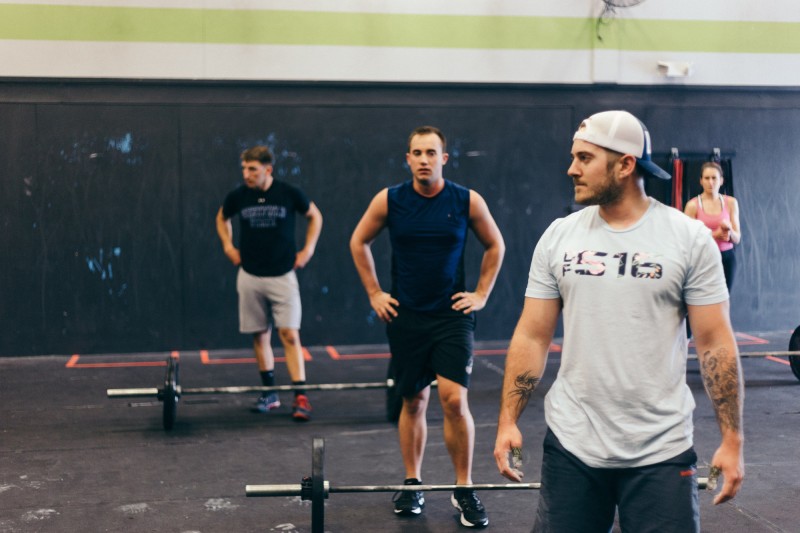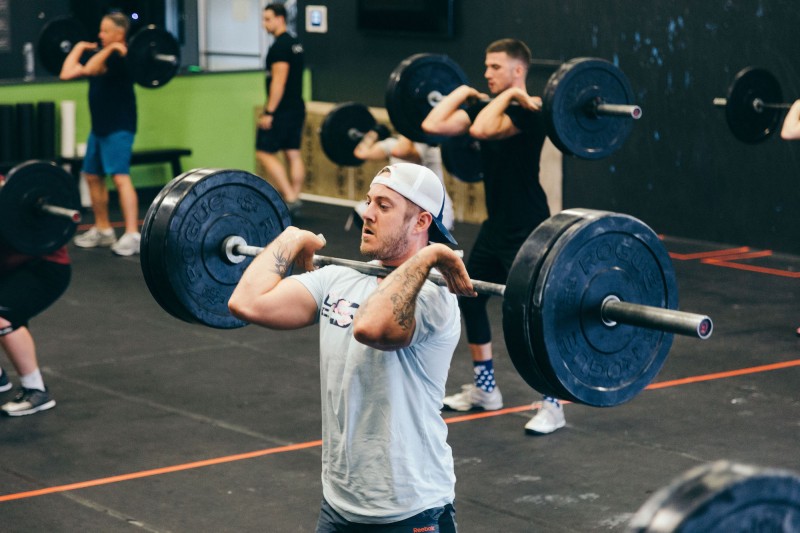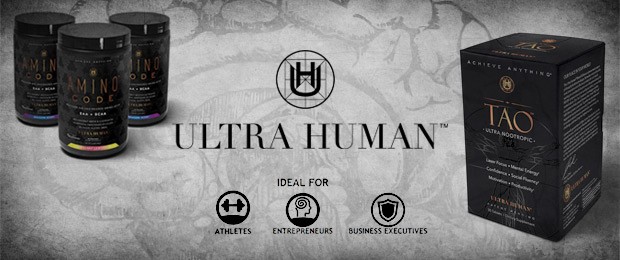
The average competitive box athlete these days has impressive stats. Being able to run a sub-six-minute mile and deadlift 500 pounds isn't a huge deal anymore. In the strength and conditioning world, you would seldom hear of athletes that possess both explosive and enduring qualities. As a coach, I was an intern at a strength and conditioning facility in my area. I remember one of the coaches talking about a friend of his that ran marathons. This same friend could also squat close to 500 pounds, ass to grass. I can vividly remember hearing this coach say that his friend was an anomaly and that very few athletes have both absolute strength and great endurance in one package. Of course, I didn't give it much thought until some years later when I first tried box programming.
RECENT: 10 Training Rules to Help You Learn What Works for You
This opened the door for understanding how to train multiple qualities simultaneously. I'm sure many coaches are going to read this and think that notion is still heresy, but the fact of the matter is that athletes all over the world are training with these goals in mind and making great progress. This article certainly isn't intended to give justification that a concurrent model of programming will work; more so, it is to shed light on how this model can be improved. Whether you're coaching general population athletes or a Games athlete, these tenets of programming cannot be ignored.
Recovery
One of the biggest things that irritates me about the fitness industry is the mindset of burying your clients on a daily basis in an effort to get them closer to their goals. This application of thinking is incredibly flawed, and in a world where people are already chronically stressed out, it's surprising that recovery is an aspect of programming that typically isn't given much thought. Although one of the solutions to this issue may be as simple as teaching your clients to listen to their bodies and take more rest days, many coaches fail to educate their clients on these points.
Obviously, we want our athletes to show up at our facility as often as possible to reap the benefits of their membership. However, at a certain point, your clients will incur diminishing returns. In fact, your clients could invariably overtrain if they're not thoughtful when it comes to taking planned and unplanned rest days. A study done by O'Neil et al., last February tested physical activity in rodents, which I was made aware via Joel Jamieson. Their findings were pretty interesting:
"Exercise is a common component of weight loss strategies, yet exercise programs are associated with surprisingly small changes in body weight [1-4]. This may be due in part to compensatory adaptations, in which calories expended during exercise are counteracted by decreases in other aspects of energy expenditure [1, 5-10]. Here we examined the relationship between a rodent model of voluntary exercise—wheel running—and total daily energy expenditure. Use of a running wheel for three to seven days increased daily energy expenditure, resulting in a caloric deficit of ˆ¼1 kcal/day; however, total daily energy expenditure remained stable after the first week of wheel access, despite further increases in wheel use. We hypothesized that compensatory mechanisms accounted for the lack of increase in daily energy expenditure after the first week. Supporting this idea, we observed a decrease in off-wheel ambulation when mice were using the wheels, indicating behavioral compensation. Finally, we asked whether individual variation in wheel use within a group of mice would be associated with different levels of daily energy expenditure. Despite a large variation in wheel running, we did not observe a significant relationship between the amount of daily wheel running and total daily energy expenditure or energy intake across mice. Together, our experiments support a model in which the transition from sedentary to light activity is associated with an increase in daily energy expenditure, but further increases in physical activity produce diminishingly small increments in daily energy expenditure."
To sum it up, merely adding more exercise beyond a certain point will not yield the results that most think. Additionally, compounding stress with stress will likely cause burnout among your clients.

In the box world, seminar staff coaches preach intensity with the premise that all intensity is relative. I both agree and disagree with this notion. Let me explain: the added level of competition, fear, and judgment adds an entirely unforeseen level of stress to an already stressful high-threshold workout. I'd venture to say that many of these same coaches may not be taking into consideration the physiological changes that take place because of these aspects alone. As a result, burnout amongst people that adhere to programs that prescribe high-intensity work is high. Although I do not have any specific data on this, being in a small community (14,000 box affiliates worldwide), you often hear about clients losing interest around the two-year mark. Moreover, when we first opened our doors, my programming was far less mindful of recovery and low-intensity measures. As a result, we had many of our clients that experienced burnout (overtraining) and moved on to another avenue of fitness.
The Solution
The solution to this dilemma is the inclusion of low-intensity on the regular in your programming (we'll talk about a specific measure), teaching your clients that it's critical that they listen to their bodies and not push their limits in each training session, and taking complete rest days from the gym. We can take this a step further and monitor our heart rate variability (HRV) and eliminate all the guesswork, but that is up to you. Frankly, having concrete data can actually be the voice of reason, as the body will often "lie" and tell you that you're feeling good and ready to push the envelope. HRV will actually monitor stress and the autonomic nervous systems' response to it.
The cardiac output method helps improve oxygen supply by increasing how effectively the heart can deliver oxygen and develops the peripheral vascular network. It works by stimulating eccentric cardiac hypertrophy through volume overload of cardiac fibers, thus causing them to stretch. This leads to an increase in left ventricular cavity volume. Exercises in which you want to use the cardiac output method are any low-intensity exercises (i.e., jogging, biking, swimming, jumping rope) as long as your heart rate is in the correct range. Sessions should be between 30 to 90 minutes in length where your heart rate is between 130 to 150 BPM (Jamieson, 2009).
For example, three rounds of the following, performed at a "conversational" pace:
- Five minutes bike
- Five minutes row
- Five minutes sled pull powerwalk
Not only can low-threshold aerobic work facilitate and improve recovery, but it can also actually enhance explosive qualities. Put simply, an efficient aerobic system will afford an athlete the ability to replenish ATP at a faster rate. When ATP is needed for more explosive movements like a one-rep max (1RM) clean and jerk, it will be more readily available. In box programming, this is a must, as every event is different and requires athletes to not only sustain their efforts for longer durations but also move explosively for maximal variations like a 1RM snatch. Moreover, an efficient aerobic system can effectively improve an athlete’s ability to recover. For athletes of all levels, this is a must, as we are only as good as our ability to recover from a training session. Lastly, sustaining higher-levels of aerobic power is key to becoming a better box athlete. Being able to stay aerobic and not cross your anaerobic threshold too soon will ensure you're able to be consistent with a wide array of workouts and thereby improve your overall output.
Single-Limb Work
Just as box programming has made big compound movements attractive to the general population, the box programming movement has also made single-limb work less popular, deeming it "non-functional." One of the biggest missing links in most programming for box athletes of all levels is the lack of attention to improving imbalance.
Quite frankly, this is work just as important as work with compound movements. Too often we see athletes try to improve their big lifts by simply doing the lifts. And for some, this will work, but for how long is another story. Chances are good that their lifts have stalled because they haven't made any attempts to improve the primary movers that assist the movement, and by merely performing the movement more, they'll more than likely regress or incur an overuse injury. Adding single-joint work can help you address your limiting factors, whereas with a bilateral movement, compensation patterns may only be exacerbated. Because the demand for these movements is low, it's much safer to add high amounts of volume. As Louie Simmons says, "you're only as strong as your weakest link." Spend the bulk of your time using unilateral exercises to improve your lagging muscle-groups, and your bilateral movements will be rewarded. Not to mention, these athletes will improve body-composition at the same time.
Although the inclusion of single-joint work is much less involved than the inclusion of aerobic work, this work needs to be prioritized on a weekly basis. I'm not talking about an entire session of single-joint work — more like one to two exercises after your strength session or at the end of your conditioning session. Additionally, one strategy that I've stolen from Louie Simmons is the inclusion of high-volume band work. This work is easily added at the end your training session and provides a huge return on investment. In the description, high volume band work can effectively improve tendons and ligaments, as well as increase the amount of stored kinetic energy available (Simmons, 2015). Here are a few examples.
After an intensive hip-dominant lower-body session:
1. Front Rack Reverse Lunge: 4 x 6 each; 60 seconds rest
2a. Banded High-to-Low Woodchop: 3 x 10-15 each; 30 seconds rest
2b. Banded Leg Curls: 3 x 30-50 each; 30 seconds rest
After an intensive knee-dominant lower-body session:
1. Single Leg Romanian Deadlifts: 4 x 6-8 each; 45 seconds rest
2a. Banded Pull-Throughs: 3 x 15-20; 30 seconds rest
2b. Weighted Straight Leg Sit-Ups: 3 x 15; 30 seconds rest
After an intensive upper-body session:
1. Incline Dumbbell Tate Presses: 4 x 10-15; 60 seconds rest
2a. Banded Pallof Press: 3 x 10-12 each; 30 seconds rest
2b. Banded Pushdowns: 3 x 30-50; no rest
2c. Banded Face Pull-Aparts: 3 x 25; no rest
Absolute Strength Work
It's become quite clear to me as a coach that many high-level box athletes lack absolute strength. If you've ever heard the podcast that Louie Simmons did with Barbell Shrugged back in 2013, he was asked the question, "What are box athletes lacking?" His answer was absolute strength. Simply defined, absolute strength is the greatest amount of force that can be voluntarily produced regardless of time (Verkoshansky, 2003). To put this into context, many box athletes lack strength in all lifts, and as a result, put huge amounts of emphasis on technique with the Olympic lifts. In addition, many coaches neglect using the max effort method and opt for higher-repetition work with compound movements. As a result, their progress is limited and largely determined by how strong they are with a true one-rep max.
By using the max effort method, our aim is to increase the one-rep max in a new variation each week. This builds great amounts of absolute strength that will be applicable to other aspects of an athlete's performance. We've seen huge correlations with increases in the Olympic lifts by simply increasing strength with the squat and deadlift. In these cases, minimal technique work is done with our programming, yet our athletes always hit new personal records when we test their Olympic lifts.
A few things to keep in mind when using the max effort method:
- Volume is intended to be low: three singles above 90%.
- Max effort variations must be rotated weekly. This will ensure we avoid accommodation and overuse injury.
- Because variations are often rotated, athletes will be able to address individual limitations with a given movement.
- This method must be separated from dynamic effort work or high-threshold conditioning work by at least 72 hours
I'm a huge fan of using variations that force athletes to develop force from disadvantageous positions. Variations such as rack pulls, Anderson squats, box squats, and presses off pins fit the bill.
Included in the development of absolute strength is sled pulling and loaded carries. For strength and conditioning, these are two aspects of programming that will likely be prioritized regularly. On the contrary, box coaches may simply forget to include such work in the midst of an overload of training modalities. These two aspects of programming are crucial to the development of your athletes' bases. Moreover, both sled pulls and loaded carry variations can provide high-resistance aerobic training, and effectively improve the aerobic abilities of the fast-twitch fibers, which means high power can be maintained longer (Jamieson, 2009).
In short, it's important to remember that only working harder or punishing your athletes will not necessarily mean they're going to incur improvements with their fitness. In fact, your clients could actually overtrain, which certainly won't bode well for the trust they have in you as a coach. If you only take one thing away from this article, it should be that recovery is actually as essential as the training itself. Much like we carefully plan our programming, our recovery should be given the same level of attention.
Last June I was talking with Dave Tate at the Two Brain Business Summit. I often think back to the point in our conversation in which I said, "I've found in most cases that less is usually more." Dave responded, "No, that's always the case." I think it's safe to say that working smarter instead of harder can apply to our lives inside the gym and outside of it.
Header Image Credit: langstrup © 123rf.com












I want to change to a regime based on what you're sharing. I cannot do my own programming. Where/what should I be doing?